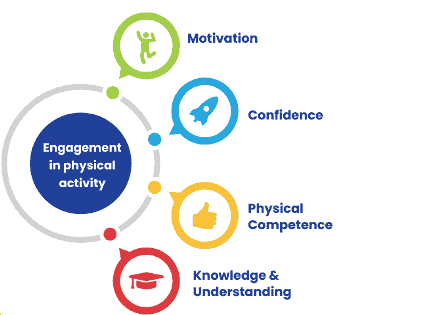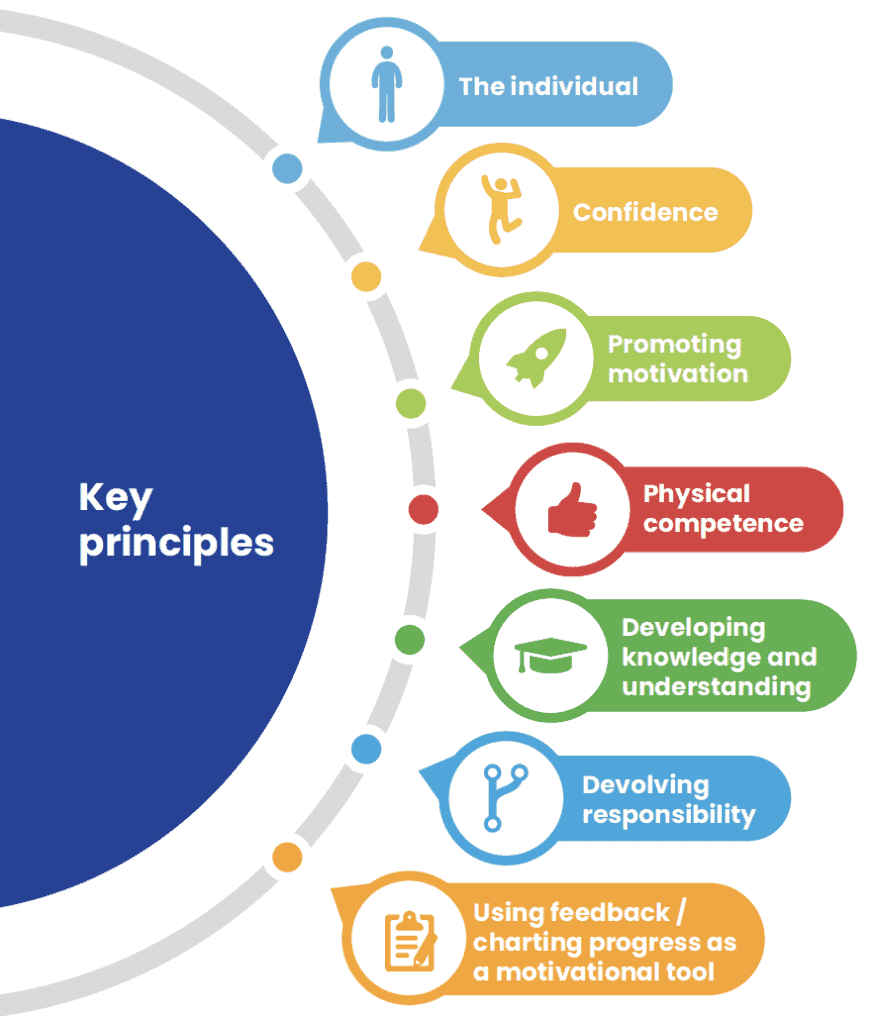
Introduction

The concept of physical literacy was formally launched in 2001, in Whitehead’s (2001) initial paper entitled, ‘The Concept of Physical Literacy’. Since then, there has been a number of developments and refinements to the definition and concept more broadly. Today the most recognised and widely accepted definition is by the International Physical Literacy Association (IPLA) who describe physical literacy as “the motivation, confidence, physical competence, knowledge and understanding to value and take responsibility for engagement in physical activities for life” (IPLA, 2017).
Whitehead’s Initial Motivation
Whitehead’s initial motivation to develop the concept of physical literacy was focussed around four main principles. Firstly, her interest in the philosophical writings of existentialism and phenomenology gave significant support for the centrality of embodiment in human existence, and thus elevated the argument towards embodiment as fundamental to human life (Whitehead, 2010).
Secondly, despite the overwhelming evidence including the philosophical writings mentioned above regarding the importance of embodiment for human existence, movement development was considered secondary to language, numeracy and social development within early childhood (Whitehead, 2010).
Thirdly, physical literacy could be used to address the growing drift away from physical activity as part of everyday lifestyle, particularly in developed countries. Physical literacy could also serve as the means to elevate the value that physical activity has in enriching life, throughout the life course (Whitehead, 2010).
Finally, there was a growing concern about the general direction that physical education was taking in many developed countries, including the UK, which judged by Whitehead placed too much emphasis on high-level performance and elitism within physical education (Whitehead, 2010).
Underpinning principles for practice
The IPLA (2022) recommend the following seven principles in informing practice.

Each of these seven principles should be evident in curriculum design, pedagogy and assessment and embrace the holistic nature of the concept, be inclusive and personalised and encourage exploration of physical activity in a range of meaningful opportunities and environments.
Summary
Whitehead, has, since 2001, campaigned to raise the awareness of the concept and develop the theoretical and philosophical underpinning of physical literacy (Whitehead, 2001, 2005, 2006, 2007a, 2007b, 2009, 2010, 2013 and 2014). Since the formal introduction of the contemporary notion of physical literacy in 2001, the concept has developed considerably and as a result has gained global attention in relation to its potential to revolutionise how physical activity and physical education are perceived and approached. This rapid development does not appear to be slowing in fact momentum continues to grow across the world. Recent policies including the National Plan for Sport Health and Wellbeing recognise physical literacy as a significant concept that will contribute to the health, wellbeing and activity levels of the population both within and beyond education. What this means is that physical literacy is here to stay and will be a part of the future direction for physical education. All educators and practitioners are encouraged to learn more about this important concept that will help shape how we approach and support physical activity engagement through physical education in the future.
More information
This is just a very brief introduction to some aspects of the concept there is much more to it. For more information or to find out more about physical literacy I recommend the IPLA and or searching more of our physical literacy posts on PE Scholar.
Alternatively, please do get in touch via twitter @LizDurdenMyers and I can signpost you to further resources and/or I am happy to discuss your specific questions or contexts needs. I really hope you enjoyed reading this post and found it useful.
References
- International Physical Literacy Association (IPLA) (2017). Definition. Available at. https://www.physical-literacy.org.uk/
- International Physical Literacy Association (IPLA) (2020) Choosing Physical Activity for Life: Be your best. IPLA.
- International Physical Literacy Association (IPLA) (2022) Physical Literacy for All: An active today for an active tomorrow. IPLA.
- Whitehead, M. E. (2001) The Concept of Physical Literacy. British Journal of Teaching Physical Education.
- Whitehead, M. E. (2005) The Concept of Physical Literacy and the development of a sense of self. IAPESGW
- Whitehead, M. E. (2006) Physical Literacy and Physical Education: Conceptual Mapping. Physical Education Matters 1, (1), 6-9.
- Whitehead, M. E. (2007a) Physical Literacy: Philosophical considerations in relation to the development of self, universality and propositional knowledge. Sport Ethics and Philosophy, 1:3, pp. 281-298.
- Whitehead, M. E. (2007b) Physical Literacy as the goal of Physical Education with particular reference to girls and young women. Unpublished paper given at CAHPERD Conference May 2007.
- Whitehead, M. E. (2009) Physical Literacy as a Human Intelligence and as a Human Capability. IAPESGW Stellenbosch 2009.
- Whitehead, M. E. (Eds) (2010) Physical Literacy: Throughout the Lifecourse. London: Routledge.
- Whitehead, M. E. (2013) What is physical literacy and how does it impact on physical education? In S. Capel and M. Whitehead (eds). Debates in physical education, 1st ed. New York: Routledge, p.46.
- Whitehead, M. E. (2014) What is the philosophical underpinning of physical literacy? MESH MAP. Accessed Online: 4th January 2016.


[…] Physical Literacy […]
[…] that the pupils enjoy and make progress in their lessons with the underpinning aim of nurturing Physical Literacy. If children enjoy PE, they are far more likely to carry on engaging with sport, physical activity […]
[…] from the traditional and elitist sport for the few approach to a more inclusive offer that nurtures physical literacy for the many. PE lessons are much more holistic and more about engagement, learning and physical […]